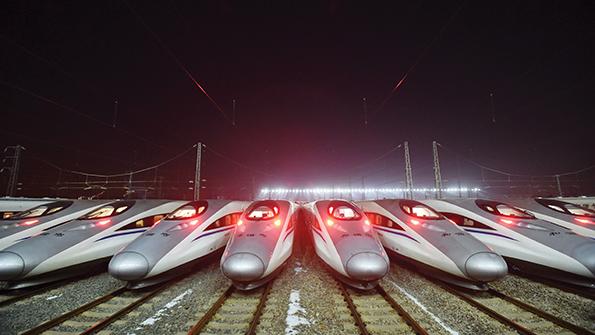
Ask the Editors: The Aviation Week Network invites our readers to submit questions to our editors and analysts. We’ll try to answer them, and if we can’t, we’ll reach out to our wide network of experts for advice.
What role can Chinese nationalism play in limiting the market of Airbus and Boeing in China? How about the influence of high-speed rail there?
Aviation Week Beijing Bureau Chief Bradley Perrett answers:
Chinese people generally support import-substitution projects, especially if they also represent technological feats. The country’s commercial aircraft projects are satisfying to the public. Indeed, one of their secondary functions is to stir nationalist feelings and bolster support for the Communist Party of China. (This applies far more to the nation’s space-exploration program.) Media, all controlled by the Leninist state, trumpet progress in Chinese commercial aircraft programs but hardly mention problems and delays; they are not allowed to criticize state companies at all.
Interestingly, nationalism does not cut much ice in personal consumer decisions. In 16 years in China, I have yet to meet anyone who has regarded a car with a Chinese brand as preferable on grounds of nationalism. On the contrary, everyone seems to be as keen as ever for a Volkswagen, Toyota, Hyundai or Buick. (My friends admire my Buick.)
This triumph of self-interest over nationalism will apply to booking air tickets, too. An irrational fear of flying is noticeable in China. Travel agents’ itinerary offerings list the size of aircraft because passengers believe bigger ones are safer. Knowing nothing about the careful certification process of the Civil Aviation Administration of China, many people will have some reservations about flying on a Chinese airliner. But this is just part of the package of disadvantages.
High-speed rail is not so much a challenge for the Comac C919 and the Craic CR929 as for the Avic MA700 turboprop airliner, for which many routes are also highly suitable for fast trains. In general, high-speed rail is said to be competitive against air travel up to 800 km (500 mi.), but the threshold distance seems to be longer in China because the trains are unusually fast and the aircraft unusually unpunctual.
Although Beijing and Shanghai are 1,100 km apart, the fast rail operation between them is quite competitive with air services. The trains run at 350 kph (220 mph.) and connect the cities in as little as 4.3 hr.—all of which can be spent with a laptop open—and there are hardly any hassles at train stations that compare with those of airports. Not only does narrowbody demand suffer; airlines heavily use Airbus A330s on Beijing-Shanghai routes.
Still, that and the other strong air-travel city-pairs already are connected by fast rail; the system is now 30,000 km long. Thus, railways and airlines may be moving toward some stability in their shares of traffic.





